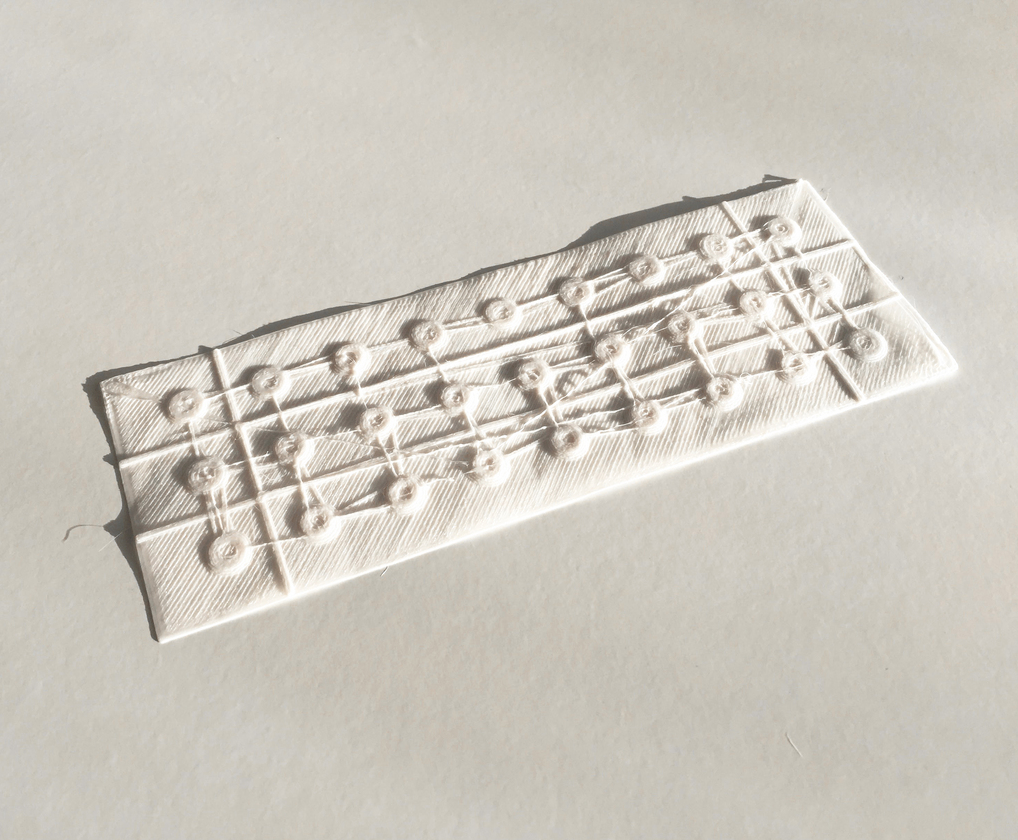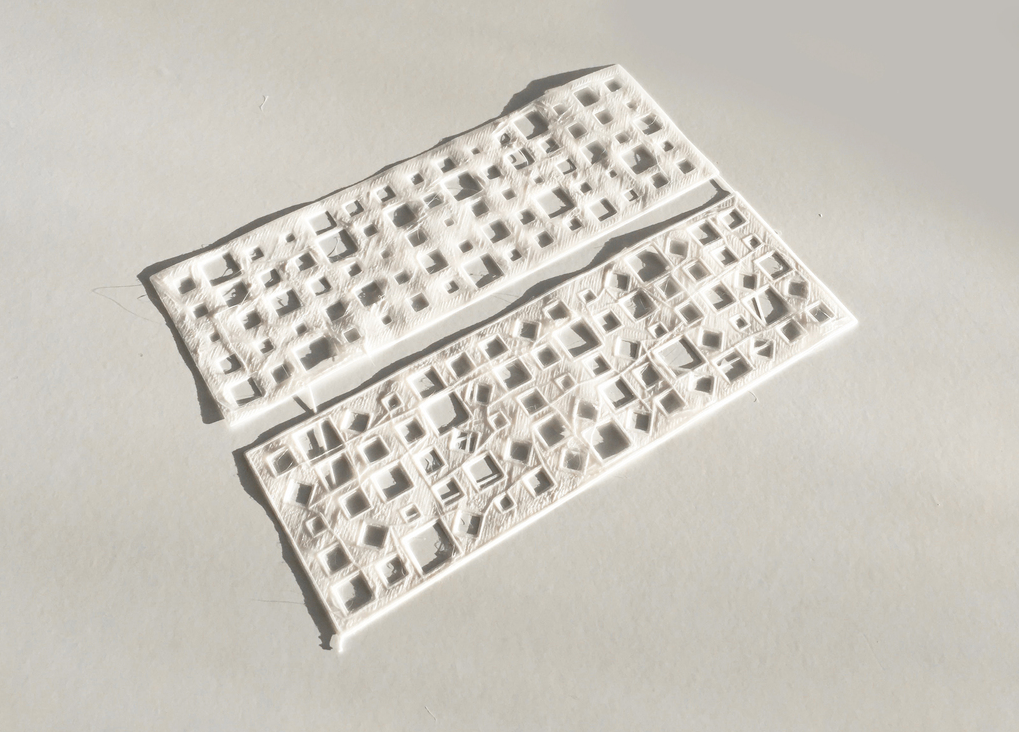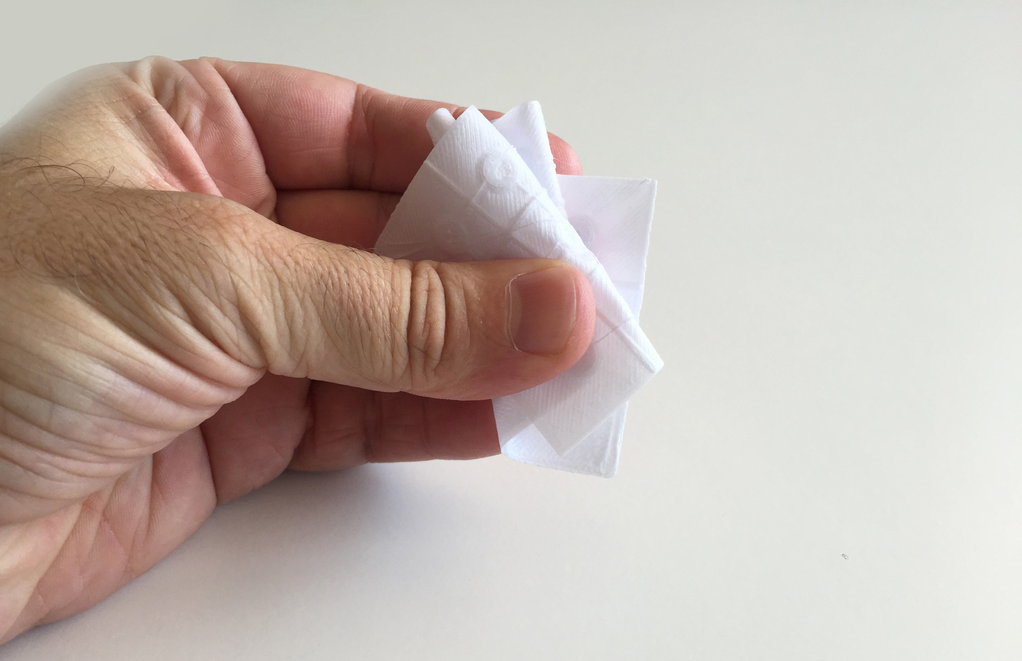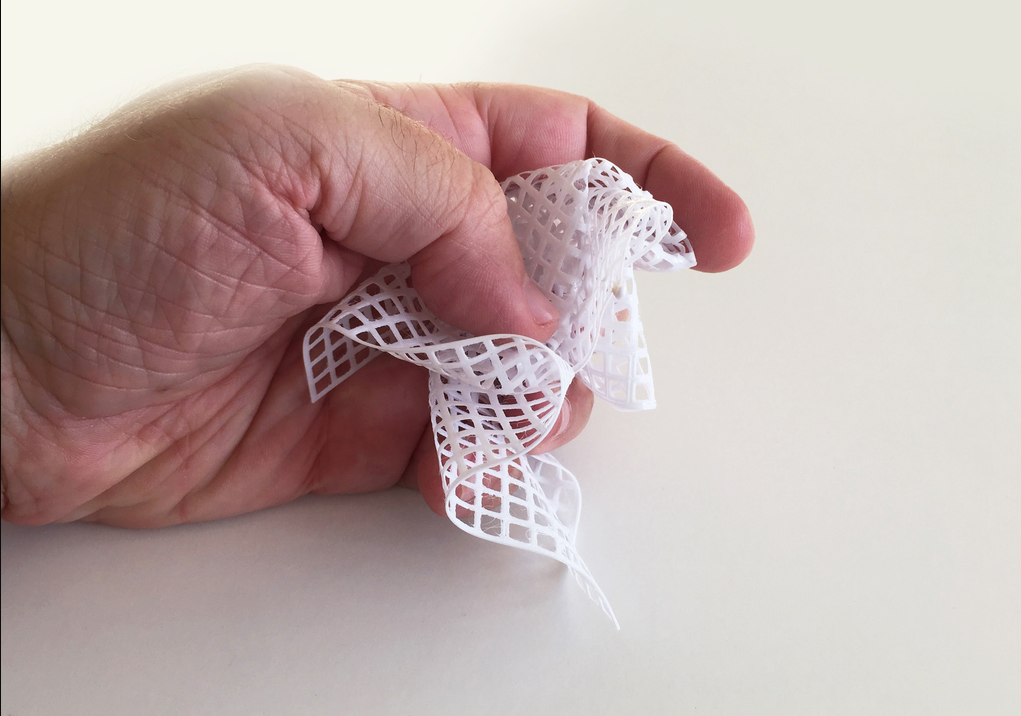Israeli architect David Mussaffi is more than just a 3D print enthusiast, he’s a dedicated 3D print designer with an expert eye for fashion. Last year, he won second place in the Thingiverse #TrexRemix Challenge for his T-Rex High Heel which has the wearer placing her foot in the gaping maw of the carnivore as an intimidating set of teeth bristle threateningly from the surrounding jaw bone.
 His latest 3D print creation springs from a material exploration using thermoplastic polyurethane (TPU), a filament that prints at an extrusion temperature of 200-220° Celsius (392-428° Fahrenheit). Mussaffi wanted to use this filament to create prints thin enough to be considered a type of fabric.
His latest 3D print creation springs from a material exploration using thermoplastic polyurethane (TPU), a filament that prints at an extrusion temperature of 200-220° Celsius (392-428° Fahrenheit). Mussaffi wanted to use this filament to create prints thin enough to be considered a type of fabric.
The idea of printing fabric is not new. In May the Electroloom, a 3D printer that has the ability to 3D print fabric using a process similar to metal electroplating, was introduced to the world through Kickstarter. The Electroloom was an exploration in the creation of a machine that would print in a particular form that would create the process for fabricating flexible, soft fabric with a 3D printer. Mussaffi’s project uses a standard 3D printer and investigates the possibilities for a particular material to become fabric-like.
 Mussaffi’s prolific contributions to 3D printing knowledge belie the freshness of his introduction to the technology. In an interview with 3DPrint.com, Mussaffi explained his experience with additive manufacturing:
Mussaffi’s prolific contributions to 3D printing knowledge belie the freshness of his introduction to the technology. In an interview with 3DPrint.com, Mussaffi explained his experience with additive manufacturing:
“I started my journey in the 3D printing world two years ago with a kit of the Printrbot Simple 1405 model (the ‘makers’ edition). My YouTube channel is full of the prints I did on this great machine. I now own a Robox 3D printer, a Zeepro Zim 3D printer and an Ultimaker 2. I have just received another Kickstarter printer, the ‘Ibox-Nano’ but I haven’t had time to try it yet.”
For this experiment in filament, Mussaffi printed at a slow speed of 15-20 mm/sec with the retraction disabled. As TPU is a filament that has a tendency to melt quickly, the prints were produced with some oozing and stringing. He has plans to try the prints again at a higher speed to see if it is possible to avoid some of those features; however, he acknowledges that he thinks these ‘defects’ actually add to the textile-like look of the prints.
 The key to evaluating the suitability of these fabrics for various applications comes in the feel, or in textile terms, the ‘hand’ of the goods. Not everything has to have the feel of silk, but clearly its flexibility and softness would impact the use. Maybe this wouldn’t breathe enough to be worn close to the skin, but imagine textiles that are used to cover work station partitions or as the curtains in medical facilities and the possibilities expand. Combine this technology with the self-cleaning properties that have been documented in water lilies and you could quickly end up with a self-cleaning fabric.
The key to evaluating the suitability of these fabrics for various applications comes in the feel, or in textile terms, the ‘hand’ of the goods. Not everything has to have the feel of silk, but clearly its flexibility and softness would impact the use. Maybe this wouldn’t breathe enough to be worn close to the skin, but imagine textiles that are used to cover work station partitions or as the curtains in medical facilities and the possibilities expand. Combine this technology with the self-cleaning properties that have been documented in water lilies and you could quickly end up with a self-cleaning fabric.
In that case, I think I will have my children’s clothing printed out of it – comfort be damned.
Let’s hear your thoughts on 3D fabric printing in the 3D Printing with Polyurethane forum thread on 3DPB.com.
Subscribe to Our Email Newsletter
Stay up-to-date on all the latest news from the 3D printing industry and receive information and offers from third party vendors.
You May Also Like
Precision at the Microscale: UK Researchers Advance Medical Devices with BMF’s 3D Printing Tech
University of Nottingham researchers are using Boston Micro Fabrication‘s (BMF) 3D printing technology to develop medical devices that improve compatibility with human tissue. Funded by a UK grant, this project...
3D Printing Webinar and Event Roundup: April 21, 2024
It’s another busy week of webinars and events, starting with Hannover Messe in Germany and continuing with Metalcasting Congress, Chinaplas, TechBlick’s Innovation Festival, and more. Stratasys continues its advanced training...
3D Printing Webinar and Event Roundup: March 17, 2024
It’s another busy week of webinars and events, including SALMED 2024 and AM Forum in Berlin. Stratasys continues its in-person training and is offering two webinars, ASTM is holding a...
3D Printed Micro Antenna is 15% Smaller and 6X Lighter
Horizon Microtechnologies has achieved success in creating a high-frequency D-Band horn antenna through micro 3D printing. However, this achievement did not rely solely on 3D printing; it involved a combination...






























